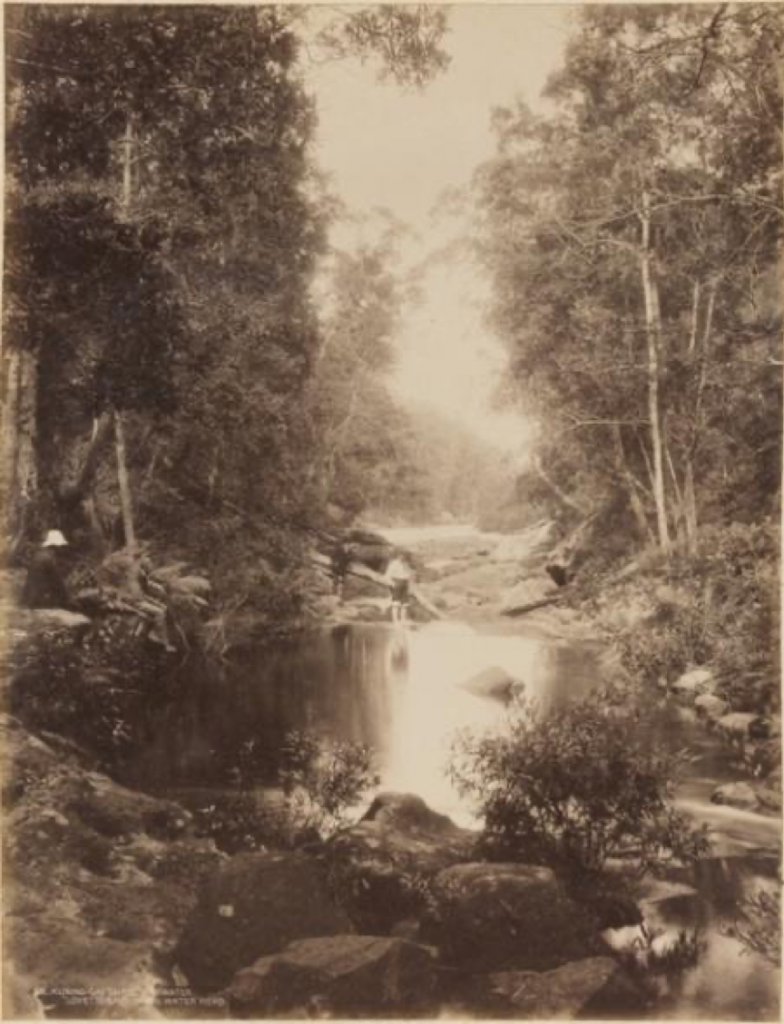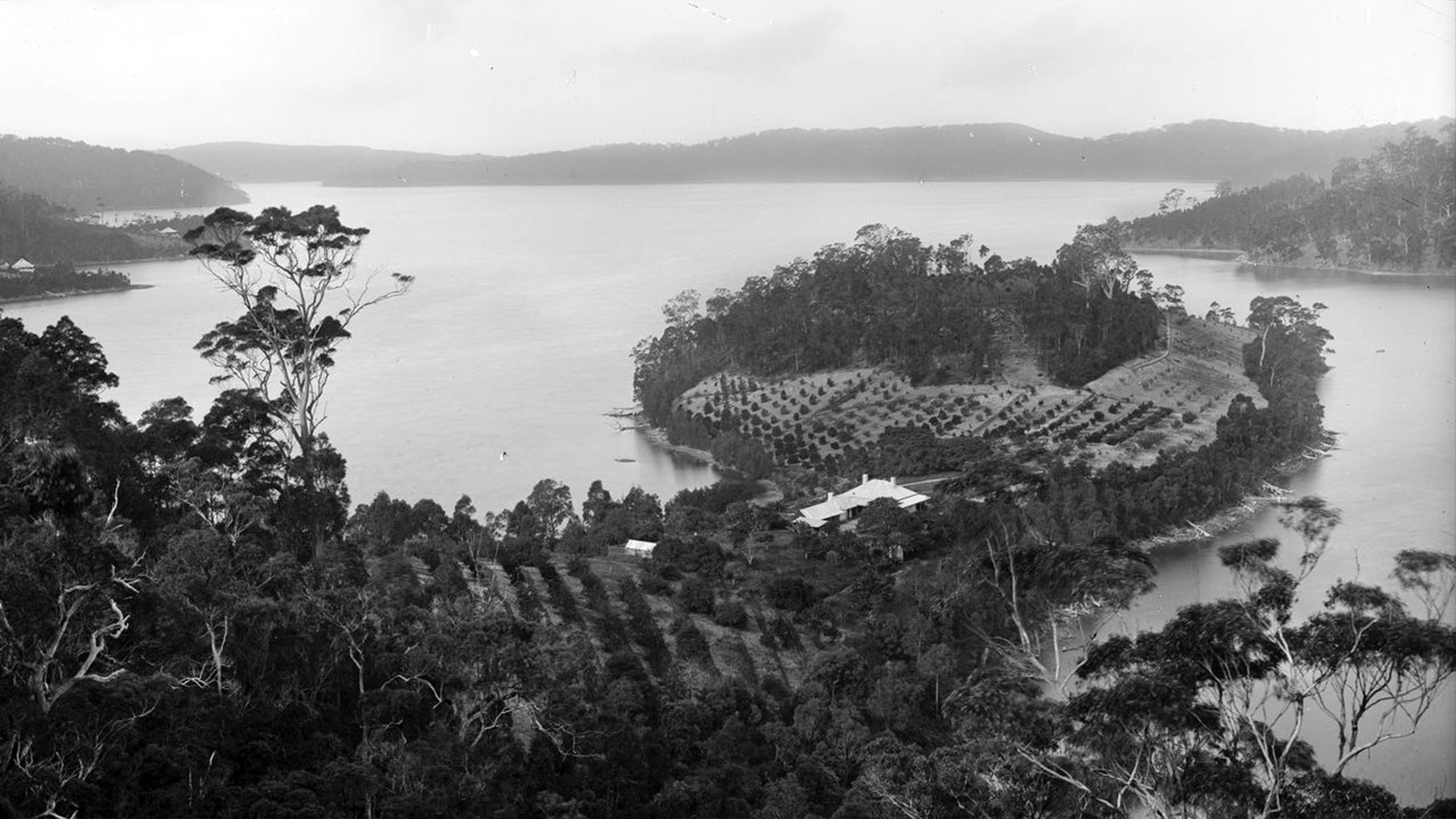Despite the dated prose, this article written for the Sydney Morning Herald over 130 years ago still rings true today.
Note: When the writer talks about his/her accommodation, I can only assume they are talking about Ventnor at Elvina Bay. Editor
A RUN TO PITTWATER
BY VIATOR
The other day I had an opportunity of spending a few dies festi on one of the many arms of Broken Bay.
To those who have not journeyed to Pittwater it is, perhaps, necessary to say that the route via Manly Beach is the most convenient way of reaching it. When the passenger arrives at Manly the Pittwater coach awaits him, and a drive of an hour and a half will land him at his destination. If the weather is gray and cold the trip should not be attempted. To be seen at its best Pittwater should be seen in sunlight.
There are several houses of accommodation about which offer the traveller all the necessary comforts. For my part I put up at the house of a friend who has one of the loveliest spots on the coast. Part of his land forms a peninsula with deep, rich soil in which the fig, the lemon, the orange, the olive and the vine flourish to full perfection. There was at one time some excellent timber growing along the Pittwater road, tall, straight, sound, close-growing trees, which have for the most part disappeared under the woodman’s axe within the last five years. This is a pity, but perhaps it could not be otherwise. The forest was too close to Sydney to escape the attention of wood merchants. There is still, however, quite sufficient native woodland to give the proper rustic air to these regions. How long this will be so under our present reckless system of forest destruction it is impossible to say, but those at least who own mighty tracts of virgin land along this road should endeavour to protect the native growths as far as possible from annihilation. We will regret our apathy in the matter of preserving our woods some day, when it is too late, perhaps, as the Herald has often pointed out, for anything but regrets. …
How near we are to primitive nature is evidenced by the presence of a little black lizard, which, attracted by the warmth, comes out of some secret hiding-place and creeps towards the strange and beautiful fire which lures it to its doom. Outside, the southern stars blaze in the lucent night with a brilliance undimmed by a day of smoke. The dark waters sleep beneath, tranquil and secret.
There is a philosophical foreigner inhabiting these regions whose wont it is to row out on the water in his boat and fill himself up with whisky. His last wilful acts are to set the sails of his boat and then lie down to sleep, letting his bark go whithersoever the winds of heaven list. For hours this fatalist drifts hither and thither before his boat is driven to land. It is a whimsical enjoyment truly, but one that instinctively commands respect. He in his boat and we on the shore are in much the same position, drifted hither and thither, willy nilly, by winds and currents known not of till our boats ground upon the shore. ….

Head of Lovett Bay – from Photographs – New South Wales, 1879 – ca. 1892 / N.S.W. Government Printer. Image No.: 294068h, courtesy State Library of NSW.
In the cool early morning I took a stroll through the garden and orchard surrounding the house, on whose trees late oranges and lemons of unusual excellence were still pendant. Down by the waterside were millions of oysters, whose careless profusion suggested a flouted industry. A well-worn path under giant gums and sassafras trees led to a noted part of the grounds. Here was a waterfall tumbling fifty foot in smoke-like spray. The whole face of the cliff which was watered by the spray was covered with clinging plants, ferns, and funny looking creepers. About this spot the vegetation was as beautiful and luxuriant as I ever remember having seen it in the mountains. There were fern trees, as tall as the stateliest in the mountain gullies. Bangaloes of magnificent size, and 40ft, upon the trunk of a glorious blue gum there was a mass of Staghorn ferns as big as small cottage. From the trees the rope-like Supple jack descended, and the bushes about fairly blazed with blossoms. So thick was the growth that it was impossible to force a way through it. A fairer spot there is not on the coast anywhere in the vicinity of Sydney.

Topham – Yeomans Bay, from NSW State Library Album – Photographs – New South Wales, 1879 – ca. 1892 / N.S.W. Government Printer. Image No.: a924070h, courtesy State Library of NSW
As the setting sun fires splintering crag and bush-grown hill, and flings a purple glow over far inflowing waters, the birds twitter in one choral burst of song, and then grow still; and all the voices of Nature but one are still. The mists troop forth from their hiding-places and sit on the vacant thrones of the sunlight, and a dull insistent moaning down the bay tells us that the sea’s sleep is disturbed by dreams of coming storm. The dawn sees us once more on our way to the “big smoke.”
A RUN TO PITTWATER. (1889, September 21). The Sydney Morning Herald (NSW : 1842 – 1954), p. 7.
Retrieved from https://nla.gov.au/nla.news-article13739295
(Partially condensed by Editor, BaysNews.)
Feature Image: Courtesy Powerhouse Museum – ‘At Pittwater’ by Charles Kerry, circa 1887-1888.
